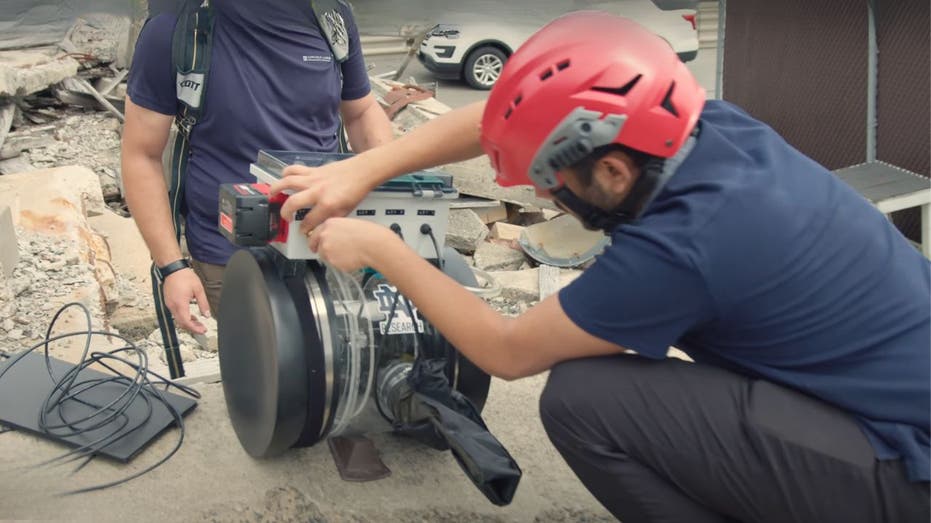Soft Vine-Like Robot Revolutionizes Search and Rescue Efforts

When tragedy strikes and buildings crumble, every moment is crucial for emergency responders who are racing against time to locate survivors trapped in debris. Traditional rescue tools often fall short in these hazardous and chaotic environments, but a groundbreaking innovation, known as SPROUT, is set to transform rescue operations and save lives.
Understanding SPROUT: The Lifesaving Robot
SPROUT, which stands for Soft Pathfinding Robotic Observation Unit, is a flexible, vine-like robot developed by the MIT Lincoln Laboratory in partnership with the University of Notre Dame. Unlike conventional rigid robots and static cameras, SPROUT is designed to “grow” into tight and winding spaces that are otherwise unreachable. This unique capability provides first responders with an innovative method to explore, map, and assess collapsed structures, greatly enhancing their ability to locate survivors.
-
Stellantis Confirms Data Breach Exploiting Third-Party Platform, Raising Industry-Wide Concerns

- How Blockchain Technology Enhances Secure Data Sharing for Organizations
-
AI Developer Anthropic Settles $1.5 Billion Copyright Lawsuit Over Pirated Works

-
US Launches Ambitious Drive to Revive Nuclear Power and Achieve Energy Independence

The Design and Functionality of SPROUT
Constructed from an airtight fabric tube, SPROUT inflates with air, allowing it to extend from a fixed base. As it grows, the robot can flex around corners and navigate through narrow gaps, emulating the natural movement of a climbing plant. Operators control SPROUT with a joystick, guiding it through the debris while receiving real-time video feeds from a camera mounted at its tip. This functionality enables responders to visualize and map hidden void spaces without putting themselves in danger.
Equipped with three pouch motors along its length, SPROUT can bend and turn with precision. An internal reel system allows for compact storage and accurate deployment whenever necessary. Beyond just cameras, SPROUT can carry various sensors to image, map, and assess potential hazards within the collapsed structures.
Why SPROUT Outperforms Traditional Search-and-Rescue Gear
Traditional search-and-rescue equipment, such as rigid robots and specialized cameras, often struggle in disaster zones. Cameras generally only allow for straight-line probing, which frequently necessitates the creation of new access points to gain visibility into the rubble. Rigid robots are susceptible to damage in unstable environments and can be costly to repair. Furthermore, manual probing can be labor-intensive and exhausting for responders.
SPROUT’s soft, flexible design effectively addresses these challenges, offering a safer, more efficient, and adaptable solution for navigating the unpredictable terrain of collapsed buildings.
Real-World Testing and Collaboration
SPROUT has undergone rigorous testing at the Massachusetts Task Force 1 training site, where it demonstrated its ability to navigate around corners and penetrate void spaces in engineered collapsed structures. These tests have been instrumental in refining SPROUT’s durability, portability, and steering controls. Plans for larger field studies are already in the works.
This innovative project represents a true collaboration, merging MIT’s engineering prowess with Professor Margaret Coad’s trailblazing research on vine robots at Notre Dame. This partnership has accelerated SPROUT’s development, allowing for hands-on demonstrations for first responders, many of whom operate with limited research and development resources.
Future Prospects for SPROUT
The SPROUT team is committed to expanding its capabilities. Current models can extend up to 10 feet, with future iterations targeting lengths beyond 25 feet. Researchers are also exploring the potential for deploying multiple SPROUT robots simultaneously to cover larger areas and enhance rescue operations during significant disasters.
Beyond its primary function in disaster response, the technology behind SPROUT holds promise for inspecting military systems and critical infrastructure in challenging-to-reach locations, positioning it as a versatile tool for various high-stakes scenarios.
The Impact of Soft Robotics on Rescue Operations
SPROUT exemplifies how soft robotics can profoundly influence some of the most perilous situations. By equipping first responders with a flexible, user-friendly tool for navigating rubble, SPROUT has the potential to save lives and revolutionize our approach to disaster rescue. It is inspiring to witness technology that is not only innovative but also has a tangible impact on helping those who risk their lives to save others when it matters most.
We want to hear your thoughts! How do you feel about the use of robots in exploring dangerous environments? Share your opinions by reaching out to us.
For more tech tips and security alerts, sign up for our newsletter to stay informed about the latest advancements and essential information.
